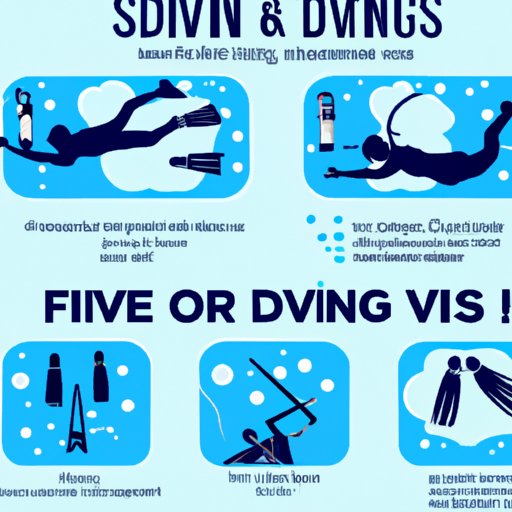
Introduction
Have you ever dreamed of exploring the depths of the ocean without the constraints of bulky scuba gear? If so, free diving might be just the sport for you. This incredible activity allows you to experience the wonders of the underwater world with nothing but a mask, fins, and your own breath. In this article, we’ll explore the basics of free diving, its history, benefits, dangers, and the best destinations to practice this thrilling activity.
A Beginner’s Guide to Free Diving
Free diving is the practice of diving into water while holding your breath, without the use of scuba gear. This sport allows for a greater sense of freedom and a closer connection to the natural environment underwater. Unlike scuba diving, free diving emphasizes the knowledge of the body’s natural abilities and techniques for increasing the time spent underwater.
Before starting, all free divers should understand and practice the correct techniques and safety measures. Breathing and equalizing techniques are crucial to this sport, as they help divers access greater depths and remain underwater for longer periods of time. Additionally, specific equipment is recommended to optimize the diving experience, including wetsuits and fins designed for free diving. Finally, free divers must always prioritize safety, including practicing with a diving partner, staying within their limits and avoiding hyperventilation.
The History of Free Diving
Free diving has been around for thousands of years and has long been a way of life for many cultures across the world. Some of the most famous free divers of the modern world include Jacques Mayol, Enzo Maiorca, and Herbert Nitsch. Today, the sport continues to grow in popularity, with advancements in technology and improved safety measures making it more accessible to all who are interested.
The Benefits of Free Diving
Free diving offers not only a thrilling physical experience but also a range of mental and physical benefits. Practicing free diving improves lung capacity, enhances breath control, and reduces stress levels. Additionally, the sport promotes mindfulness and awareness of the present moment, encouraging a deeper connection with the natural environment.
The Dangers of Free Diving
As with any activity involving water and physical exertion, safety risks must be taken into account when free diving. The most critical danger is shallow water blackout, which occurs when the body’s oxygen levels drop too low, causing the diver to lose consciousness. Decompression sickness, respiratory problems, and environmental hazards are also major risks that all free divers should be aware of.
Free Diving Destinations
For the adventurous,
there are some breathtaking and exotic locations to experience free diving. Some of the world’s best free diving destinations include the Maldives, Dahab, and Hawaii. These locations boast crystal-clear waters teeming with an abundance of marine life, underwater caves, and shipwrecks that offer an unrivaled experience for free divers.
Conclusion
Free diving is an incredible sport that offers a unique way to explore the underwater world without the constraints of scuba gear. It is essential to understand the techniques, equipment, safety measures, history, benefits, dangers, and recommended destinations to make the most of this incredible sport. By following the proper protocols, free diving can be a thrilling and safe way to experience the beauty of the ocean.




